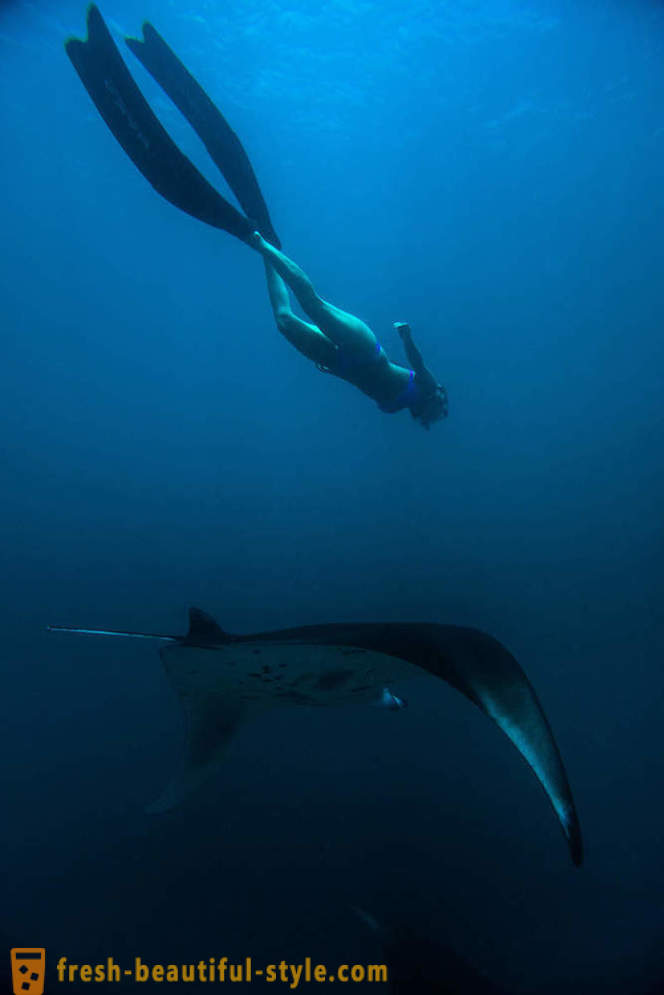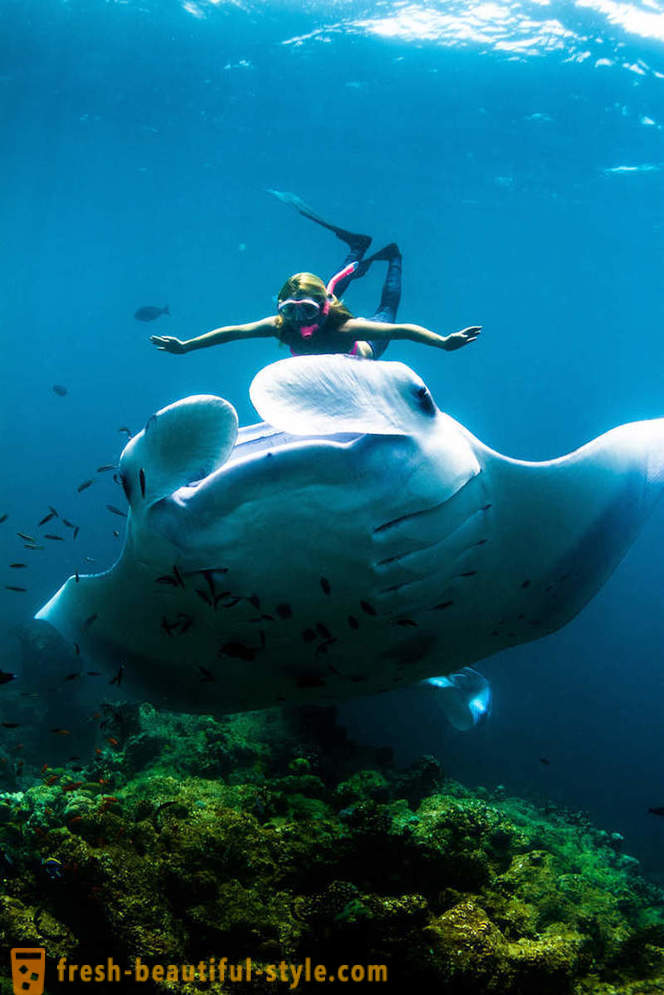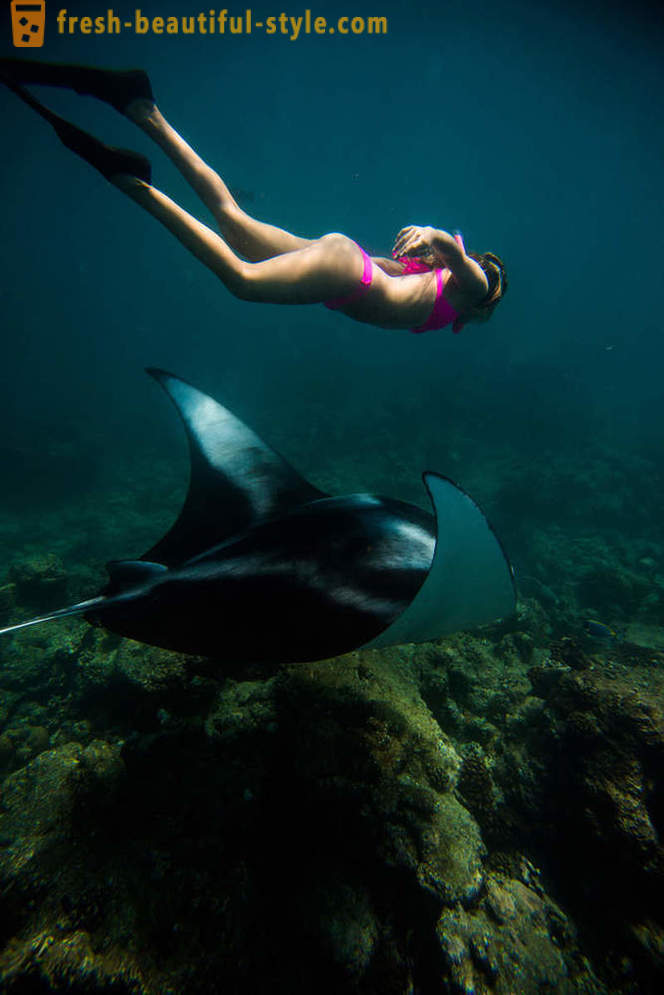Giant sea devil
• The giant sea devil
Manta, or a giant sea devil - the largest of the rays, the width of the body of individuals up to 9, 1 m, and the mass of large specimens - up to 3 tons! Swim with them.

okeanodromnye These fish are found both in the coastal zone, near the coral reefs and island groups and above the deep water at depths up to 120 m around the underwater vertices. (Photo by Sarah Lee):

The Giants are not dangerous, these fish feed on zooplankton, filtering it from the water. (Photo by Sarah Lee):

Manta swim, flapping pectoral fins like wings. In the open sea, they are moving at a constant speed in a straight line, and at the shore often bask on the surface of the water or lazily circling. (Photo by Sarah Lee):

The great pectoral fins manta together with the head forming disk rhomboid shape whose width is approximately 2, 2 times as long and large individuals up to 9 m, even though the average does not exceed 4 to 5 m. The maximum registered weight of about 3 tons. (Photo by Sarah Lee):

Due to the large size of manta rays in few enemies in the wild, they can attack only large sharks such as the tiger shark, great hammerhead and bull shark and killer whales, killer whales and small. (Photo by Sarah Lee):

The weight of food eaten weekly one mantle is about 13% of its own weight. (Photo by Sarah Lee):





The number of giant sea devils in the past 20 years has declined substantially due to overfishing. Especially rapidly reduced subpopulation in the Gulf of California, the waters of Indonesia and the Philippines. (Photo by Sarah Lee):

In addition to the fishing mantle threatening deterioration of environmental conditions. The World Conservation Union has assigned this species the conservation status of "Vulnerable". (Photo by Sarah Lee):













































